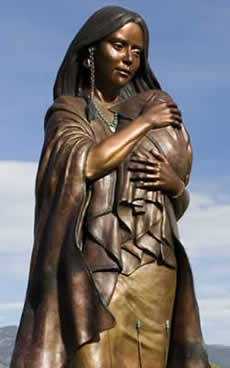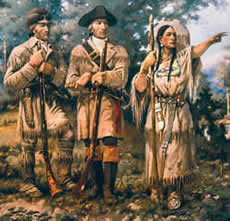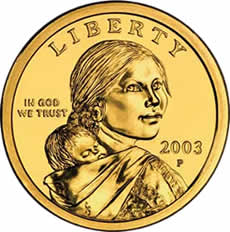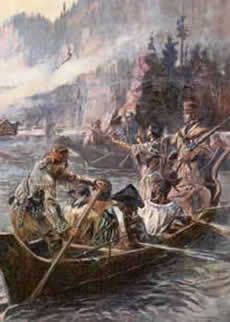USA PEOPLE SEARCH BY NAME!
- ❖ Current Address
- ❖ Phone Numbers
- ❖ Criminal Records
- ❖ Public Records
- ❖ Neighbors
- ❖ People's Age
- ❖ Property Ownership
- ❖ And Much More
Tue, 7 Jan 2014
How Sacagawea Showed Lewis and Clark The Way
There could be nothing more daunting for any adventurer than to explore vast uncharted lands studded with geographical and weather barriers, wild animals and hostile natives. But the Corps of Discovery Expedition from 1804 to 1806 proved to be more than up to the challenge as they surveyed the new US territorial acquisition in a staggering 8,000 mile journey lasting for 28 months.
Sacagawea Showed Lewis And Clark The Way
The great success of the famed expedition was largely built upon the extraordinary friendship and mutual trust of its leaders, Meriweather Lewis and William Clark, as well as the dedication and courage displayed by all the members involved in the journey.
But luck proved to be their greatest trump card as it averted disasters that could potentially bring the expedition to an abrupt and tragic end. And they couldn't be any luckier than acquiring the services of a Shoshone Indian woman named Sacagawea. Sacagawea Showed Lewis And Clark The Way through the rugged Northwestern topography that contributed much to the expedition's success.
Lewis And Clark Met Toussaint Charbonneau
When the expedition party arrived at the Hidasta-Mandan villages in November, 1804, Lewis And Clark met Toussaint Charbonneau, a French-Canadian fur trader who happen to speak the Hidasta dialect. He was hired as an interpreter together with his wife Sacagawea who can speak both Shoshone and Hidasta. They also brought along with them their newborn baby Jean Baptiste, making him the youngest member of the expedition.
Sacagawea was initially a strategic acquisition when Lewis realized her value upon learning that their next stop at the Great Falls and Stony Mountains were a thousand miles ahead. They needed horses to cross those treacherous mountains, something that Sacagawea's Shoshone Tribe could provide. However, her value proved to be more than what Lewis and Clark had bargained for.
Sacagawea Showed Lewis And Clark The Way through unknown territories with her keen intuition and incredible sense of direction. She could read the rivers and valleys quite well and had an inherent sense of what the landscape says about where they were and what direction they should take. This is demonstrated clearly when she recognized Beaver Point and immediately knew that it was near her tribe.
When they finally made contact with the Shoshone in August, 1805, the expedition's primary aim to obtain horses from the tribe became an absolute certainty when Sacagawea recognized that the Shoshone Chief was none other than her long lost brother Cameahwait. It was an indeed an emotional reunion for the siblings and the horses were purchased sooner than expected.
Sacagawea Received Nothing
Along the way, Sacagawea's heroics continued. She found food in places where there seems nothing can be found, saving the expedition from starvation. She made clothing for the whole party and also taught them how to make their own.
At one point, while crossing the great Missouri river, one of their boats capsized taking with it precious supplies, medical instruments and journals. With her baby in tow, she immediately saved most of the items from floating down the raging river when no one else took the courage to do so.
Sacagawea Showed Lewis And Clark The Way for most of their journey, but her greatest contribution to the expedition lies in her being an Indian woman. Whether it was a clever tactic by Lewis and Clark or simply by manifest destiny, The Corps of Discovery Expedition avoided tense confrontations with natives when passing through dense Indian territories. Indians tribes quickly recognized they could not possibly be a war party having an Indian woman with her baby in the group.
Sacagawea and Charbonneau marked the end of their voyage with the Corps of Discovery Expedition when they made the return trip to the Hidasta-Mandan Village on August 14, 1806. Charbonneau was promptly given a $500 reward and 320 acres of land.
Sacagawea received nothing.
Read:
Who Explorered The Yellowstone National Park?
Nathaniel Turner And The Slave Revolt
The Original Dalton Brothers
Jamestown, The First Permanent Settlement In The USA
The Vikings Came To America Long Before 1492
The History of Beer in the USA
A History of the European Immigration
The Wild West Period - The Golden Age Of America



